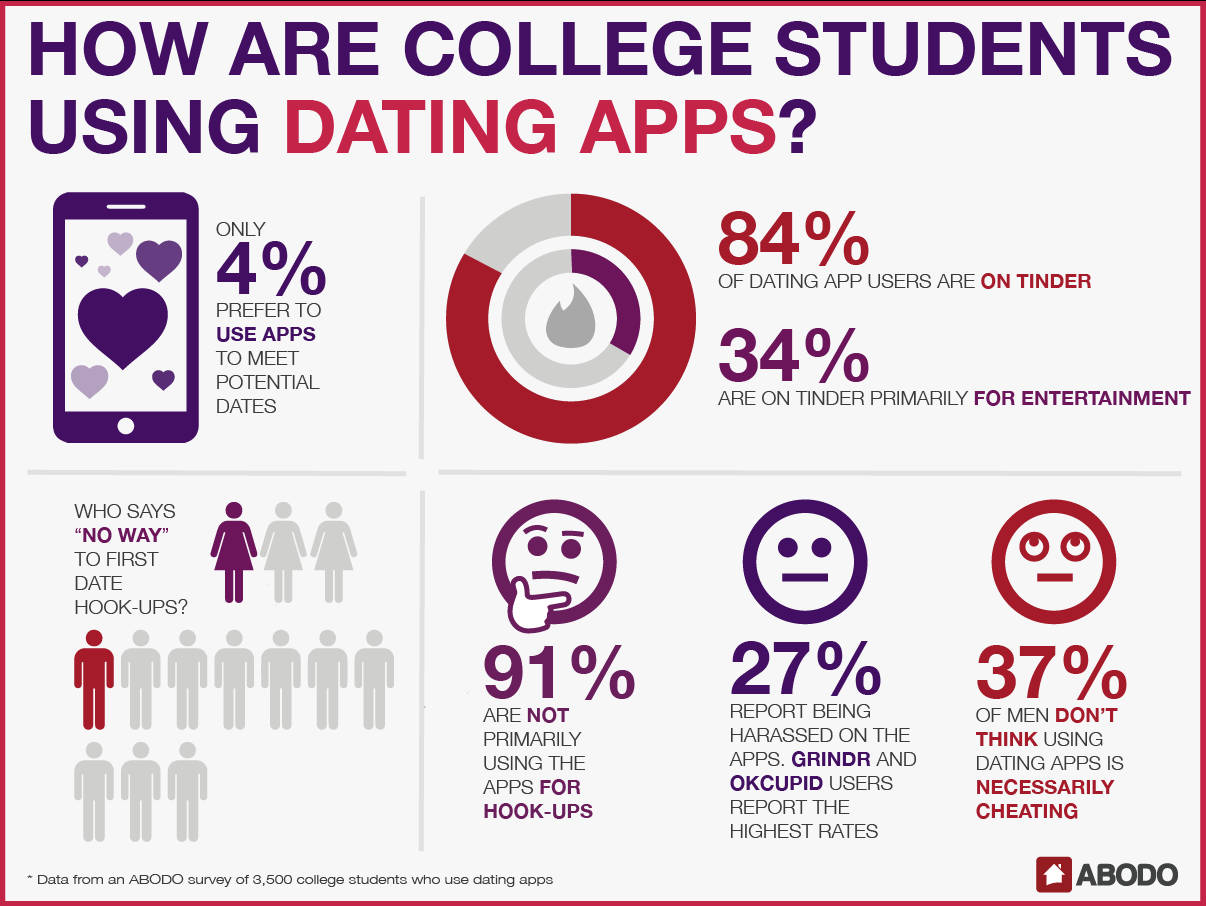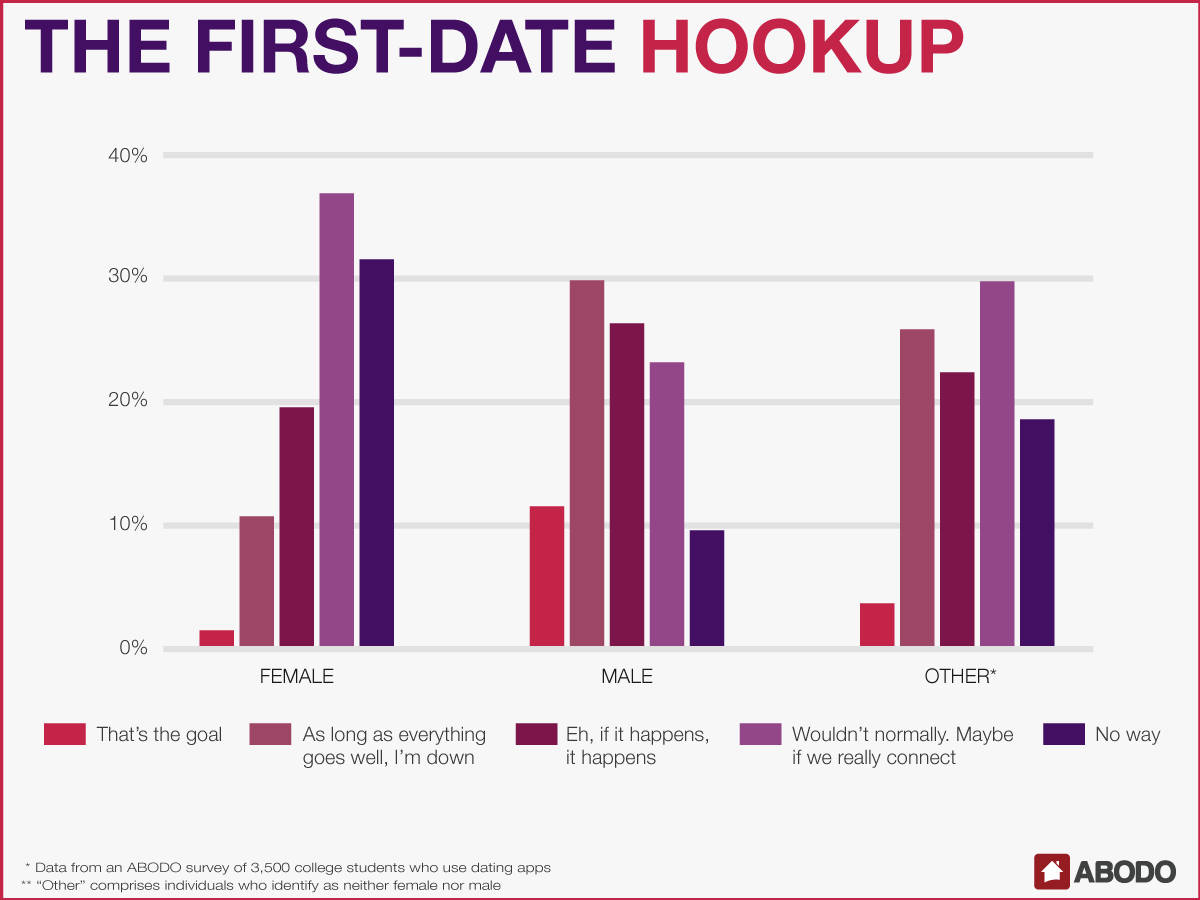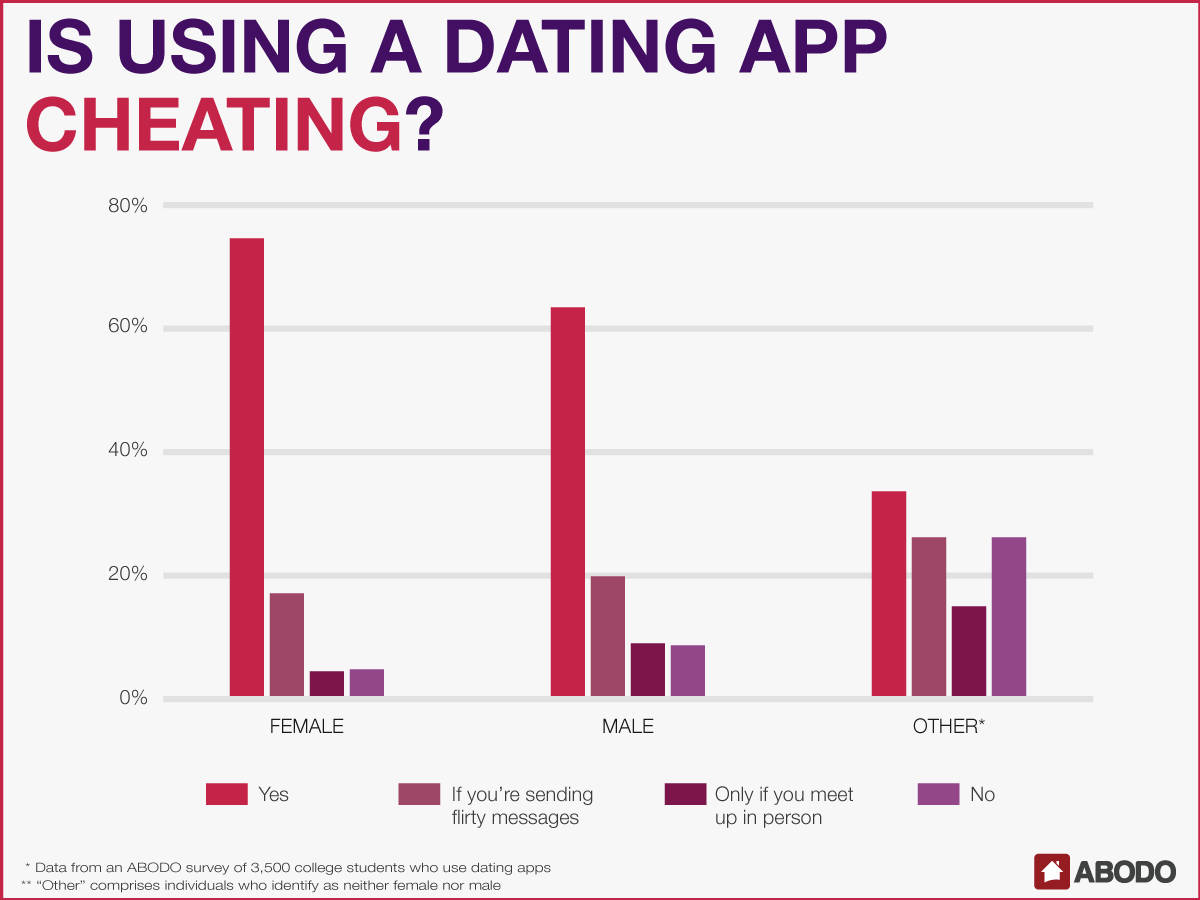For nearly as long as humans have used computers, they’ve used them to find love — or at least some… *ahem*… physical connection. But what about dating apps?
As early as 1965, Harvard undergraduates were using nascent punch card technology to match date-seeking students with each other. By 1993, when Gary Kremen founded Match.com, the internet had made matchmaking quicker, more user-friendly, and efficient. And after the release of the first iPhone in 2007, the smartphone revolution led to an explosion in mobile dating apps, which capitalized on new mobile GPS technology to streamline the process even further. Forget waiting around for someone to notice your profile — with apps like Grindr or Tinder, you could find a connection close to you, almost instantly.
The online dating industry now brings in over apps that pay?
In attempt to answer these questions, we surveyed almost 4,000 current college students around the country. Which dating apps did they prefer? Why? Were they looking for love or something different? What have their experiences been like?
Their answers are illuminating, to say the least. We’ll dive into details later, but first a few standout overall trends.

Perhaps the most surprising thing we discovered was that only 4% of college students who use dating apps prefer to meet potential dates using them. When it comes to meeting people, 79% of college students still vastly prefer the old standbys — meeting people through mutual friends or mutual interests.
Remember the rash of think pieces about Millennial “hook-up culture”? As far as dating apps go, concerns might have been overstated: 91% of respondents are primarily using apps for something other than hookups. In fact, 34% of respondents who mainly use Tinder listed entertainment as their main reason. That’s almost four times as many as who indicated they used it for hookups, and more than twice as many who said they were looking for casual dating.
Not all the results were so surprising. For example, while 31.5% of female app users said they would never hook up on a first date, only 9.4% of men said the same thing. Additionally, 37% of men don’t necessarily think using dating apps while in a relationship is cheating. And sadly, 27% of users reported being harassed on the apps.
Most-Used Dating Apps

When it comes the most popular, most-used dating app, Tinder was the overwhelming favorite. The GPS-based app, which pioneered double-matching and “swiping left,” was the the most popular app by far, used by 84% of the college students we surveyed. That’s about five times the percentage of the second-most popular app, female-friendly Bumble, which only allows women to initiate a conversation. OkCupid and Match, both of which are mobile adaptations of older desktop online dating programs, were used by 8.6% and 6.4% of respondents, respectively. Grindr’s more specialized audience — the app is meant primarily for gay and bisexual men — probably explains why only 4.3% of respondents said they used it.
Interestingly, Hinge, which bills itself as “The Relationship App” and markets itself as a way out of “casual dating,” was the least-favored app on our list, with only 1.8% of respondents claiming it as their way of finding digital dates.
Dating Apps: For Love or Nudes?
Interest in online dating has skyrocketed in recent years, especially among younger Millennials. In 2013, just 10% of ages 18 to 24 reported using a dating app or site. Just two years later, that number nearly tripled to 27%. Is it pursuit of love that’s pushing these college students to download and start swiping? Well, not exactly.

Most typically, it’s escaping boredom, not pursuing love, that’s behind all of the internet action. For 34.1% of surveyed female college students, entertainment is the #1 motivating force to use dating apps.The same is true for 29.7% of males and 33.3% of those who identify as neither male nor female. Of Tinder users, 34.4% of said entertainment was their primary motivator, but they weren’t the only ones: Bumble (27.1%) and Grindr (23.3%) users also ranked it as their main reason.
More people of every gender are using the apps to pursue casual dating than to find hookups, which have nearly become synonymous with apps like Tinder. Although it’s by far the most commonly used dating app, nearly 50% of Tinder’s surveyed users cite curing boredom and getting an ego boost as their main intention. In fact, Bumble beat out Tinder in users primarily looking for hookups, 9.6% to 9%. But Grindr trumped them all, with nearly 19%.
In a more heartwarming turn, more people overall are using the apps to find love (11.5%) than to find hookups (8.8%). (Among men, however, hookups are still the third-most popular reason for using the apps, with 14.8% choosing them as their primary reason.) For the romantics seeking love via phone screen, Match, one of the oldest in the game, is still the top stop, though OkCupid and Coffee Meets Bagel users also rated love as their primary goal. Users of Grindr — another app highly linked to hookup culture — rated love as their #2 reason, less than a percentage point ahead of hookups.
Are you inspired by these students’ commitment to true love and romance? Well, also consider that 15.5% of women, 9.6% of men, and 7.4% of other genders use the apps purely for an ego boost. For these users, a match is not a contract.
A significant number (10.2% of women, 9.6% of men, and 11.1% of others) are also primarily using the apps to find friends, though exactly what type of “friend” they’re looking for isn’t specified.
In dead last for main reasons to use dating apps are the oft-DM’d pics known as “nudes,” with only 8.7% of all survey respondents choosing it as their primary reason. Women, surprisingly, beat out men with this preference: 9.1% of women cite nudes as their #1 reason to use dating apps, compared with 7.9% of men. Those who identify as neither men nor women lead the pack, with 11.1% chasing nudes above all else.
But which app is best for nudes-seekers? Coffee Meets Bagel has the highest percentage of users (11.2%) citing salacious snaps as their primary reason. In second place is Match, followed by OkCupid, and then Tinder.
The App Date Experience
Over a third of surveyed college students are primarily using dating apps to meet people in a somewhat romantic sense — be it for casual dating, love, or hookups. But our survey found that when it came to romance, they still prefer to find dates the old-fashioned, analogue way.
Given the choice, 40.3% of dating-app-using college students would prefer to meet potential dates through mutual friends, 38.9% would prefer mutual interests, and 16.6% would rather meet someone purely by chance — running into each other in a bar or coffee shop as total strangers. Just 4% actually prefer to find dates on the apps they’re using in such high numbers.
There are a number of potential reasons for this. Maybe it’s the fact that only a third on the apps are actually interested in meeting someone. Or maybe it’s because using a dating app can sometimes be an unpleasant experience.

More than a quarter of all dating app users — 35.5% of women and 14.1% of men — have experienced harassment. Nearly 60% of those who identified as neither female nor male also reported harassment, though these respondents comprise just 1% of our sample.
Grindr is the only app to have more than half of its surveyed users (51%) report harassment. OkCupid saw the next-most, with 40%, perhaps due to the largely unrestricted messaging capabilities — on Tinder, for example, you must “match” with someone before you can begin a conversation, which could explain why the platform has the lowest incidence of harassment (26%) in our surveyed students. However, Bumble, which uses a similar functionality but requires the woman to send the first message, had 32% of its surveyed users report having experienced harassment. Coffee Meets Bagel is only slightly behind Tinder, with 27%, and Match falls in the middle of the pack with 30%.
But for these college students who beat the odds and successfully schedule a date — an actual face-to-face date — what happens next? Is sex a foregone conclusion? Depends on who you ask.

Only 5.6% of respondents said that hooking up was the goal of the first date — again subverting the expectation commonly associated with these apps. Here’s where the extremes of gender disparities are most clear: Only 1.4% of female college students said a first-date hookup was their goal, compared with 11.5% of male students and 3.7% of those who identify as neither of those genders. Keep in mind, “As long as everything goes well” was also an option here, so these diehard respondents aren’t even that concerned about whether the date is a total disaster.
On the flip side, 31.5% of women responded “No way,” compared with a meager 9.4% of men.
The majority, however, fall in the middle: 31% said they wouldn’t normally hook up with someone on date one but would consider it if they had a great connection, 22.4% didn’t care much either way, and 18.6% would prefer their date is at least a mild success first.
What If You’re Already Taken?
So far most of our data has focused on presumably single people. But what if you’re already in a relationship? We asked several questions about the possibly-thorny issue of dating apps cohabiting with a committed relationship.
Overall, most people didn’t admit to dating app use while in a relationship. But answers did vary by gender. While only 11.5% of women had used a dating app in a relationship, 16.4% of men had. Respondents who didn’t identify as male or female were far more likely to answer yes: 44% had used an app while in a relationship with someone else.
When we broke the question down by app, the percentage of users in relationships were in the low-to-mid teens for every app except Grindr (30%) and OkCupid (21.7%).
For most people, using an app while in a relationship isn’t exactly common behavior. But is it cheating?

The majority of our respondents — 69.4% — said yes. Once again, though, things get murkier when you break down things by gender. Although 74.3% of women said using a dating app while in a relationship was definitely cheating, only 63.3% of men did. That number fell even further for non-binary respondents. Only a third of them would describe dating app use in a relationship as definitely cheating.
There seemed to be grey areas about how far an app user could go before crossing a line. For some people, just looking is OK: Almost 20% of men — and over 25% of non-binary users — said using a dating app was only cheating if you sent flirty messages, compared to 16.8% of women. Among men, 8.6% thought that using an app was only cheating if both parties met up in person, compared with 4.1% of women. For non-binary respondents, 14.8% said that messages were fine, but meet-ups were cheating.
Some people saw no problem at all with using a dating app in a relationship. Roughly twice as many (8.4%) men as women (4.7%) thought that dating app use definitely wasn’t cheating. And 25.9% of non-binary respondents saw no problem with using a dating app while in a relationship. But for these respondents, perhaps traditional monogamy wasn’t a part of the relationship to begin with.
Conclusion
Like many new technologies, dating apps provoke quite a bit of hand-wringing about contemporary life. They seem to reflect all of our deepest insecurities about ourselves: Are we too dependent on constant validation? Have we lost the ability to connect with other living, breathing humans? Are we too glued to our phones?
The answer, as you can still label your relationship on Facebook, is “It’s complicated.” According to our data, more and more college-aged Millennials are downloading dating apps, and the stigma of finding love online — long a deterrent — has mostly vanished. There are options for nearly every lifestyle and preference, from hookups to true love. And yet even as user numbers spike, over 95% of our surveyed students still prefer to meet potential partners offline. When it comes to love, it appears we’re still a bunch of romantics.
Methodology
We conducted an email survey of college students across various campuses in the United States, receiving nearly 5,000 complete responses. The survey first asked respondents to check boxes next to the dating apps they use or to write in any app not provided. The 3,500 respondents who indicated using at least one of the provided choices, wrote in the name of a specific app not listed, or said they were not currently using a dating app but named specific dating apps they had used in the past, made up the base of dating app users for our analysis. If a respondent indicated use of multiple apps, they were included in the analysis for each app they listed. Apps that did not have enough surveyed users for further analysis about usage were dropped (Zoosk and Hinge). The ‘What’s the Goal?’ question asked respondents to rank reasons by importance. We considered just the percentage of people who ranked each as their main reason for using dating apps.
About Rentable
Rentable was founded in early 2012 for a very simple reason: Apartment hunting in our hometown of Madison, WI, was just plain agonizing. We’ve grown our apartment search platform dramatically over the years – and have helped millions of renters find their next apartment in small and large cities alike.
